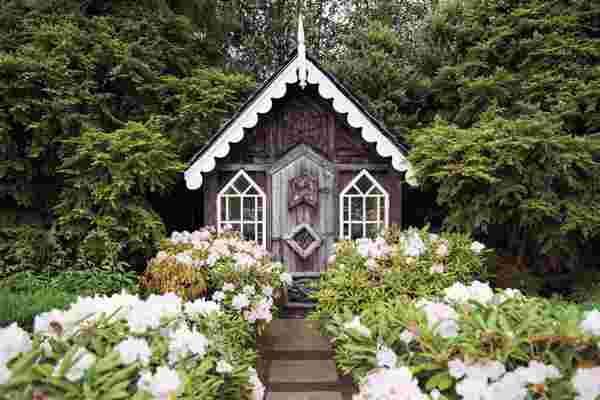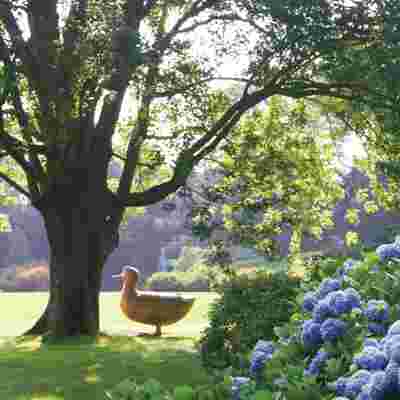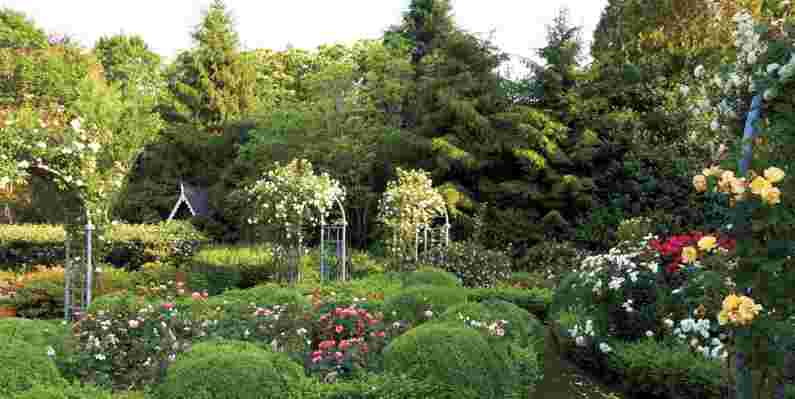Step Inside Peter Marino’s Gorgeous Hamptons Garden
For those with even a passing interest in architecture and fashion, Peter Marino needs no introduction. The larger-than-life mastermind responsible for groundbreaking architectural projects around the globe—from flagships for Louis Vuitton and Dior to private residences of untold elegance (and scale)—is always a few leaps beyond the forefront of cutting-edge design. Yet perhaps the most tangible demonstration of Marino’s ceaselessly creative outlook is the Long Island garden he’s lovingly tended for two decades.

Here, Marino, who has just released a new book dedicated to this very subject, The Garden of Peter Marino (Rizzoli, $85), sits down with AD to discuss his beloved green oasis.
Architectural Digest : The gardens are incredibly extensive—pink, purple, yellow, rose garden, the orchards, the forest, the great lawn. Do you have a favorite spot—or even a few—and why?
Peter Marino: I like the forest because it is all green and always cool. I like the yellow garden because it is so unusual and rare. I like the lotus pond because it is so lush and the sound of the running water so calming. I like the rose garden because it is so beautiful and smells so heavenly.

AD : Your friend comments that this could only be a garden of an architect after observing your design on an axis. What are the important similarities between designing buildings and designing your gardens?
PM: For buildings: be at the site, build prototypes, and adjust accordingly. For landscaping: be there whether planning trees or bushes; try out several ideas and adjust accordingly.

AD : Your garden contains so many different plant varieties that you’ve grown, selected, developed? Do you have any favorites?
PM: I love many of the underused native viburnum. The peonies have a fullness and beauty that is so unique. I understand why Van Gogh painted irises; they are truly outer-space cadets, exotic sculptures, almost anthropomorphic.
AD : There are 42 sculptures by Claude and Francois-Xavier Lalanne—and as you say, they're a major component. Friendship aside, what led you to choose sculptures by Les Lanlannes—and to do so over and over again?
PM: The Lalannes's surreal qualities and sense of humor are the two qualities that I wanted my gardens to share. In every sense, the blooming gardens are totally surreal, and I purposely let them get overgrown so they don’t look too serious.
AD : You talk about the experience of the hydrangea plants turning purple when they were supposed to be pink. What have been some of the greatest challenges related to designing the gardens over the past two decades? Are there aspects you are the most proud or happy with?
PM: The biggest challenge is the 5-to-15-percent extinction rate every winter. And insect infection because we use no pesticides and are totally organic. It is particularly depressing to see how nature destroys its own beauty.
AD : Why did you decide to divide the book into two parts?
PM: The first part of the book is recording the garden as it is—almost hyper-realistic if you will. Manolo Yllera’s photography [in the book] is a love poem.
AD : Please describe the garden in a few words.
PM: It is now 21 years old and a mature adult. It is the culmination of 21 years of my Saturdays—a private passion, a healing, creative antidote to the stressful vicissitudes of modern life.